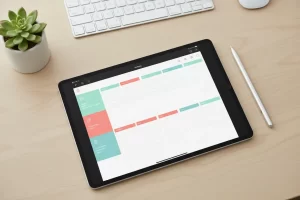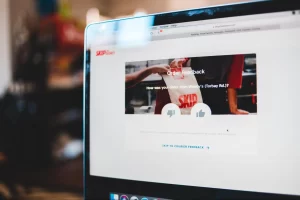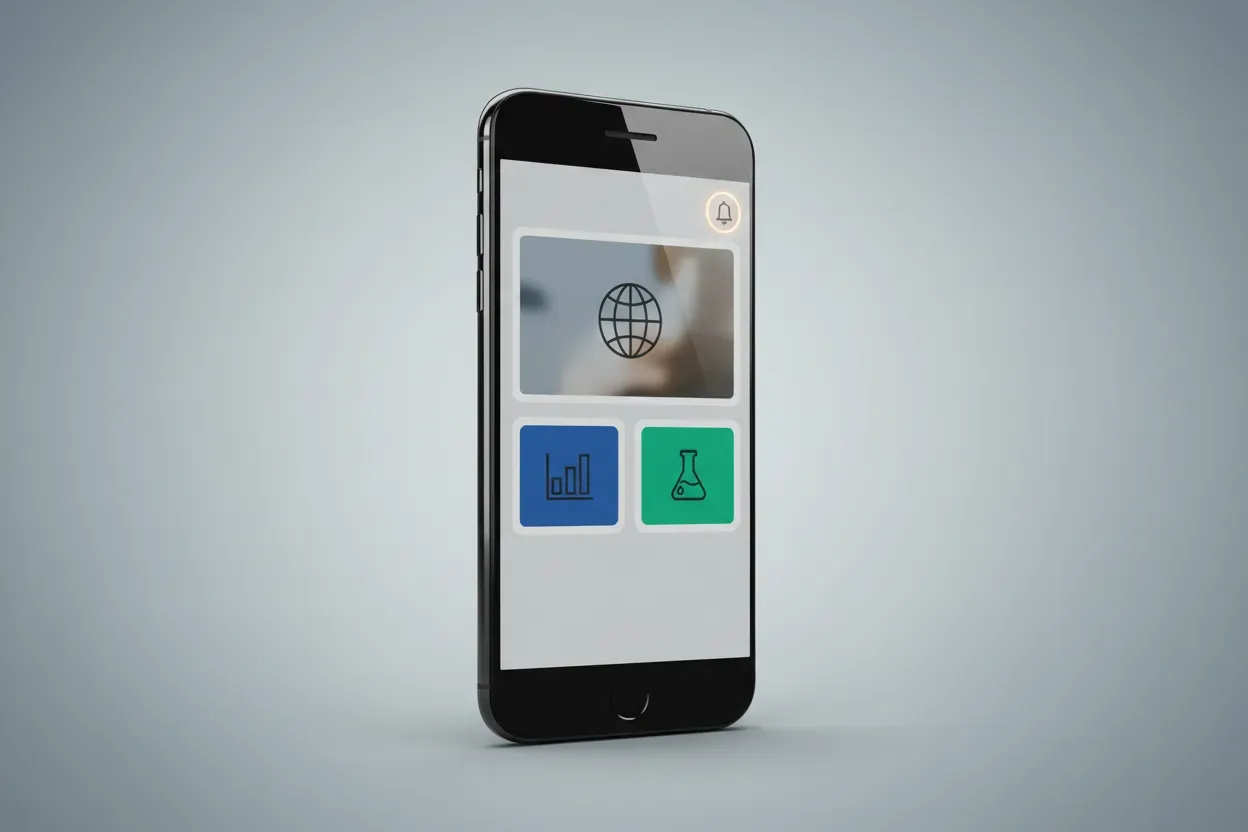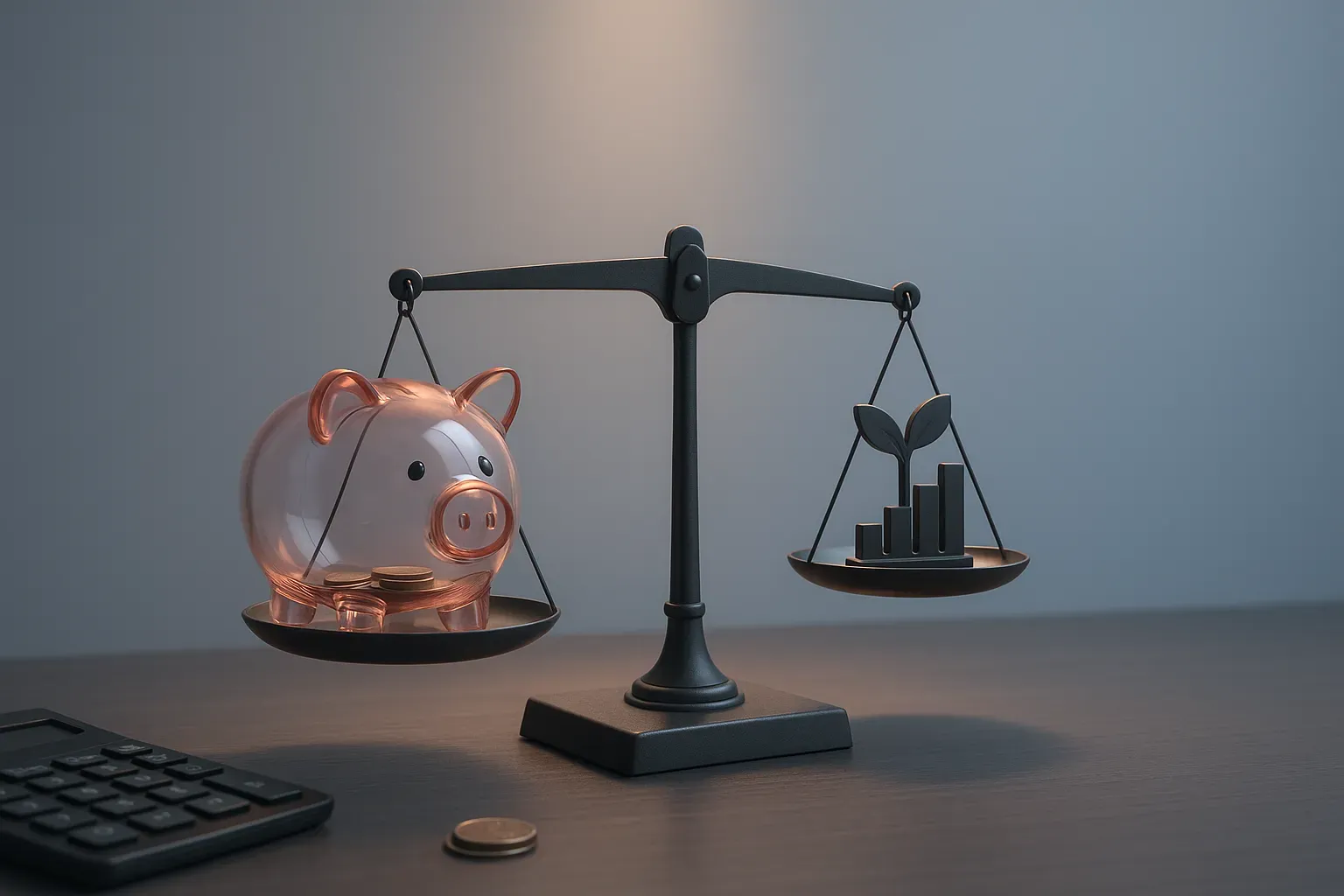15 Financial Goals for the Future: Strategies for Success
Unpacking the complexities of financial planning, this article taps into the wisdom of seasoned professionals to lay out strategic paths for achieving various financial goals. With a focus on creating robust income streams and securing long-term stability, readers will gain actionable guidance to fortify their financial future. Experts demystify intricate investment strategies, offering clear, attainable steps for anyone looking to strengthen their economic position.
- Build a Diversified Passive Income Portfolio
- Scale Spectup to Support More Startups
- Create Scalable, Tech-Driven Business Portfolio
- Boost Recurring Revenue to £500,000 Annually
- Build Stronger Investment Portfolio for Passive Income
- Open Community-Based Afterschool Center
- Build Stronger Investment Portfolio for Long-Term Wealth
- Build Solid Emergency Fund for Six Months
- Launch Private-Label Product Line
- Automate Back-End Logistics for Van Operations
- Open Hybrid Wellness Studio
- Build an Emergency Fund
- Build Six-Month Emergency Fund for Business
- Expand Lumi Aesthetics’ Services
- Expand Bookkeeping Business in Boston Area
Build a Diversified Passive Income Portfolio
One financial goal I’m setting for the future is to build a diversified passive income portfolio that can support long-term financial independence. I’m focusing on a mix of investments–such as dividend-paying stocks, index funds, and real estate ventures–to create multiple income streams and hedge against market volatility.
To achieve this, I plan to allocate a consistent portion of my monthly income toward these investments, regularly review and rebalance my portfolio, and continuously educate myself on emerging trends. Working with a financial advisor to refine my strategy has also been key, ensuring I remain adaptable and proactive in reaching my long-term financial goals.
 Shehar Yar
Shehar Yar
CEO, Software House
Scale Spectup to Support More Startups
One financial goal I’m setting for the future is scaling Spectup to support more startups globally while maintaining operational efficiency. As someone who’s seen the financial struggles many startups face–especially since I know 38% fail because of cash flow issues–it feels personal and critical to ensure Spectup continues to thrive while helping others thrive, too.
The first step is aligning the company’s financial strategy more closely with our growth plans; for instance, we’re exploring new investor partnerships to secure additional funding without compromising equity. I also plan to optimize operational costs–similar to what I did at N26 when I managed process improvements in banking operations.
Additionally, I want Spectup to build a buffer, a rainy-day fund of sorts, that could sustain the business through six to twelve months of downturn–a lesson I vividly learned from watching early-stage startups burn through their runway too quickly. On a personal level, I’m also increasing my own contributions to long-term investments, ensuring I’m aligned with the success I’m guiding others toward. Balancing aggressive growth with financial resilience isn’t easy, but if my time at Deloitte taught me anything, it’s that the most innovative businesses often come out ahead only when they have solid financial foundations.
 Niclas Schlopsna
Niclas Schlopsna
Managing Consultant and CEO, spectup
Create Scalable, Tech-Driven Business Portfolio
My long-term financial goal is to build a portfolio of scalable, tech-driven businesses that generate sustainable cash flow and long-term equity value — independent of short-term market cycles. It’s not just about revenue, but about creating resilient assets that can grow with or without my daily involvement. To achieve this, I’m focusing on diversifying income streams through ventures like Coytx, strategic advisory, and investments; reinvesting profits into growth, automation, and smart acquisitions; building strong teams and operational systems that reduce founder dependency; and allocating a portion of capital into long-term investment vehicles — both in crypto and traditional assets — for wealth preservation. I also set clear quarterly KPIs tied to both company performance and personal financial milestones to stay focused and accountable. Ultimately, financial freedom for me is not just a personal goal — it’s a foundation that enables me to support other founders, fund innovation, and contribute to the broader entrepreneurial ecosystem.
 Kirill Sagitov
Kirill Sagitov
Founder, coytx global llc.
Boost Recurring Revenue to £500,000 Annually
I’m setting a financial goal to boost our recurring revenue to £500,000 annually through a subscription model. We’ve seen a 38% uptick in parents asking for regular shipments, which tells me we’re overdue for something consistent and predictable. I want to secure 3,000 subscribers at £14 per unit, shipping once a month. That kind of stability will allow me to invest more in ingredient sourcing and team expansion without relying so heavily on seasonal retail cycles.
To achieve this, I’ll be investing £8,000 in backend development to improve our customer account dashboard, adding options like skip-a-month and flexible billing. I’ll pair that with a new retention push—SMS reminders, a tighter checkout flow, and a customer win-back campaign for lapsed users. We’re projecting that if even 20% of our one-time customers from the past 18 months convert into subscribers, we’ll hit our target in under 10 months. I’m treating this goal as an operational shift, not just a sales spike.
 Erin Hendricks
Erin Hendricks
President and Owner, Sammy’s Milk
Build Stronger Investment Portfolio for Passive Income
One financial goal I’m setting for the future is building a stronger investment portfolio that generates passive income. While I’ve focused heavily on business growth, I want to ensure my money is working for me beyond active income streams.
The first step is diversifying investments by balancing stocks, real estate, and alternative assets to create multiple income sources. I’m prioritizing consistent contributions to index funds while researching high-return opportunities in commercial real estate. To stay on track, I’ve set a monthly investment target and automated contributions to remove any temptation to delay.
I’m also committed to eliminating unnecessary expenses and reallocating that money into assets that appreciate over time. Tracking financial progress and adjusting strategies based on market conditions will keep me on course. The key is discipline and long-term thinking—focusing on steady growth rather than quick wins. This goal isn’t just about wealth; it’s about creating financial security and freedom for the future.
 Georgi Petrov
Georgi Petrov
CMO, Entrepreneur, and Content Creator, AIG MARKETER
Open Community-Based Afterschool Center
One financial goal our family is setting for the future is to one day open a community-based afterschool center that supports working families and gives kids a safe, enriching place to go after school. It’s something close to our hearts, and we hope to grow it into a space that offers tutoring, creative programs, and mentorship for children in our neighborhood.
While we’re not there yet, we’re slowly saving, learning about small business planning, and connecting with local programs to better understand what our community needs. It’s a long-term dream, but one we hope to build together and eventually pass down to our children, adding not only financial stability but meaning to their lives.
 Doreen Nunez
Doreen Nunez
Founder & Creative Director, Mommy Rheum
Build Stronger Investment Portfolio for Long-Term Wealth
One financial goal I am setting for the future is building a stronger investment portfolio for long-term wealth. To achieve this, I will diversify my investments by balancing stocks, real estate, and other assets to reduce risk. I will also set aside a fixed amount each month, stay updated on market trends, and reinvest profits to grow my wealth over time. Consistency and smart planning will help me reach this goal.
 Joseph Commisso
Joseph Commisso
Owner, WeBuyHousesQuick.ca
Build Solid Emergency Fund for Six Months
One specific financial goal I set for myself was to build a solid emergency fund that could cover at least six months’ worth of living expenses. This goal was important for gaining financial security and reducing stress around unexpected life events.
To achieve this, I first assessed my monthly expenses, then set a target amount to save. I automated a portion of my income to go directly into a high-yield savings account every month. This made saving consistent and removed the temptation to spend that money elsewhere. I also reduced non-essential spending, like cutting back on dining out and entertainment, and looked for ways to boost my income, such as taking on freelance work.
A key strategy was breaking the goal into smaller milestones. By focusing on saving one month’s worth of expenses at a time, it made the larger goal feel more manageable. I also tracked my progress regularly, which helped me stay motivated.
 Ramzy Humsi
Ramzy Humsi
Founder & CEO, Vortex Ranker
Launch Private-Label Product Line
My next financial goal is launching our own private-label product line. We’ve spent years curating other people’s products–now it’s time to own what we sell. The vision is simple: items built from search data, customer sentiment, and pure emotion. We already track which gifts get the most love, shares, and saves. The plan is to turn that data into physical inventory. Something beautiful, useful, and impossible to ignore.
To pull it off, I’m allocating 22% of our quarterly revenue to a product development reserve. No fluff. Just raw cash flow dedicated to R&D, packaging, and micro-influencer testing. I’ll be A/B testing packaging designs with our newsletter audience and running 48-hour Instagram polls to stress-test brand names. The rest? SEO testing before a single item hits production. We’re skipping guesswork and going straight to informed obsession. That’s how you win in e-commerce without wasting a cent.
 Danilo Miranda
Danilo Miranda
Managing Director, Presenteverso
Automate Back-End Logistics for Van Operations
My goal is to fully automate the back-end logistics of our van and truck operations in the next 24 months. I’m not just talking about scheduling or GPS tracking. I mean predictive fleet deployment based on weather, regional demand spikes, and major construction or event data. If we crack that, I expect a 12% lift in vehicle utilization rates and a 9% reduction in fuel waste. That’s real money–seven figures annually.
To make that happen, I’ve earmarked £250,000 specifically for system upgrades, machine learning development, and internal retraining. I’m working directly with our data team to tag and clean five years of trip logs. Then we’ll train a smart algorithm to flag low-efficiency routes before they drain margins. I’m bringing in a logistics consultant for 60 days to challenge every assumption. We’re not looking to patch holes–we’re redesigning the ship mid-sail. Let’s see who catches up.
 James McNally
James McNally
Managing Director, SDVH [Self Drive Vehicle Hire]
Open Hybrid Wellness Studio
My financial goal for the next three years is to open a hybrid wellness studio—half consultation, half immersive therapy experience. Think nutritional planning meets breathwork pods and metabolic testing zones. It’s not cheap. Construction, equipment, team expansion—I’m looking at a minimum of $700,000. But I’m done thinking small. People want real transformation, and you can’t deliver that from a generic white room with a scale and a clipboard.
Step one is to lock in recurring revenue. I’ve already shifted 35% of our practice to subscription-based programs. That gives us stability and forecasting power. Next? I’m launching a high-impact wellness retreat for 12 clients at a time—twice a year. Premium pricing, curated results, and video case studies to show that what we do works. Every real earned cent is going into the studio fund. This isn’t a dream. It’s a build. With a deadline.
 Renato Fernandes
Renato Fernandes
Clinical Nutritionist, Saude Pulso
Build an Emergency Fund
One financial goal that many people often prioritize is building an emergency fund. It’s essentially a safety net aimed at covering unexpected expenses such as medical emergencies, home repairs, or sudden job loss. Starting this fund can be daunting, but by setting a monthly savings target and sticking to it, the goal becomes more achievable. Many choose to automate their savings, where a specified amount transfers to a savings account with each paycheck, eliminating the temptation to spend it.
Another practical step is to trim unnecessary expenses. This might involve canceling unused subscriptions, eating out less frequently, or swapping pricier leisure activities for more cost-effective ones. Every dollar saved can be rerouted to the emergency fund, accelerating its growth. Adequately funding an emergency account not only lessens financial stress but also reduces reliance on credit during tough times, keeping debt levels in check. Thus, having an emergency fund brings peace of mind and provides a financial buffer that can help navigate through life’s unexpected turns.
 Alex Cornici
Alex Cornici
Writer, Insuranks
Build Six-Month Emergency Fund for Business
One financial goal I’m currently working towards is building a six-month emergency fund for my business. This ensures we can handle unexpected expenses or downturns without disrupting operations.
To achieve this, I’ve set up a dedicated savings account and committed to allocating 10% of our monthly profits directly into it. By treating this like a non-negotiable expense, I’ve been able to stay consistent without feeling overwhelmed by the goal.
My advice to someone with a similar goal is to start small and automate the process if possible. Even if it’s just a small percentage of your revenue, consistency is key. It’s not about saving large amounts quickly but about creating a sustainable habit that protects your business in the long run. Focus on steady progress, and you’ll be surprised at how quickly your fund grows.
 Nikita Sherbina
Nikita Sherbina
Co-Founder & CEO, AIScreen
Expand Lumi Aesthetics’ Services
One of my key financial goals for the future is to expand Lumi Aesthetics’ services while maintaining our commitment to personalized care and high-quality results. I plan to invest in advanced technologies to enhance the range of non-invasive treatments we offer, such as expanding our body contouring options and introducing more skin rejuvenation treatments.
To achieve this, I’ll focus on increasing patient awareness through digital marketing, sharing client success stories, and offering seasonal promotions. Additionally, I plan to enhance our patient experience with new luxury amenities to ensure they feel comfortable and pampered. These steps will help us continue growing while staying true to our core mission of providing effective, non-invasive aesthetic treatments that leave clients feeling confident and rejuvenated.
 Neda Hovaizi
Neda Hovaizi
Clinical Director, Lumi Aesthetics
Expand Bookkeeping Business in Boston Area
One financial goal I’m setting for the future is to expand my bookkeeping business to serve more clients in the Boston area, particularly small and medium-sized businesses that need reliable tax and monthly bookkeeping services. To achieve this, I plan to invest in scaling my operations while maintaining the personalized service that sets us apart. This will involve refining our systems to increase efficiency, enhancing client communication, and expanding our team of experienced professionals.
To work towards this goal, I will focus on improving our digital infrastructure to streamline processes and make it easier for clients to access real-time financial reports. This will allow me to dedicate more time to growing the business and nurturing client relationships. Additionally, I will be attending networking events and industry conferences to connect with potential clients and stay updated on the latest tax and bookkeeping trends, ensuring that our services remain relevant and competitive.
By taking these steps, I’m confident that I can expand our reach while continuing to provide exceptional, trustworthy services to small businesses. My ultimate goal is to reduce financial stress for business owners and help them focus on what they do best: growing their businesses.
 Taryn Pumphrey
Taryn Pumphrey
President, Ledger Lift







































